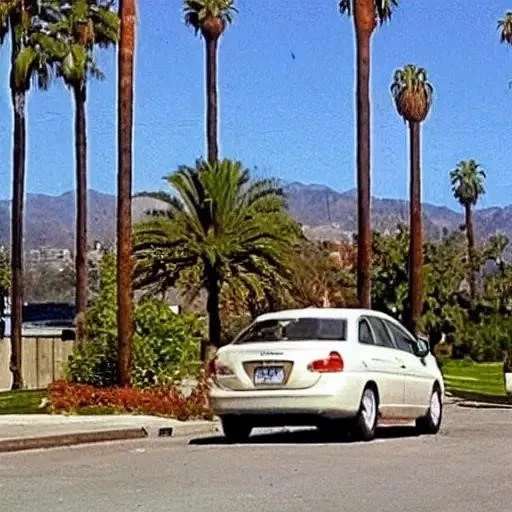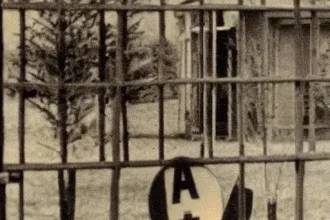For countless automotive enthusiasts‚ the allure of a custom-tuned vehicle is an irresistible siren song. The dream of enhancing performance‚ perfecting aesthetics‚ and truly making a car an extension of one’s personality is deeply ingrained in car culture. Yet‚ for those residing in the Golden State‚ this passion often collides with a formidable wall of regulations‚ sparking a common‚ anxiety-inducing question: is tuning your car illegal in California? The prevailing narrative often paints a grim picture of fines and frustration‚ but the full truth is far more nuanced‚ offering a beacon of hope for responsible modifiers.
California‚ a trailblazer in environmental protection‚ boasts some of the world’s most stringent emissions standards. These forward-thinking policies‚ while vital for public health and ecological balance‚ have inadvertently created a labyrinth for car owners seeking to modify their vehicles. Many believe that any alteration beyond factory specifications automatically renders a car non-compliant‚ effectively crushing the spirit of customization. However‚ by carefully navigating the state’s meticulous legal framework and embracing innovation‚ enthusiasts can indeed transform their rides legally‚ proving that passion and responsibility can coexist on California’s sun-drenched highways.
Key California Car Modification Regulations at a Glance
For those looking to understand the core principles governing vehicle modifications in California‚ this table provides essential information regarding the regulatory landscape and compliance requirements. Navigating these rules is crucial for any enthusiast aiming to legally enhance their vehicle.
| Aspect of Regulation | Description & Requirements | Reference/Authority |
|---|---|---|
| California Air Resources Board (CARB) | The primary state agency responsible for protecting public health from air pollution. CARB sets emissions standards for new and used vehicles and regulates aftermarket parts. | CARB Official Website |
| Executive Order (EO) Number | A crucial certification for aftermarket performance parts. Any part affecting emissions must have a CARB EO number to be legal for street use in California. Without it‚ the part is considered illegal for on-road use. | CARB Aftermarket Parts Database |
| Smog Check Program | Mandatory biennial inspection for most vehicles (8 years old or older) to ensure they meet state emissions standards. Vehicles with non-CARB compliant modifications will fail. | California Bureau of Automotive Repair (BAR) |
| Emissions Control System Tampering | It is strictly illegal to remove‚ modify‚ or disable any factory-installed emissions control device (e.g.‚ catalytic converter‚ oxygen sensor‚ ECU programming that bypasses emissions). | California Vehicle Code (CVC) Sections |
| Legal Modifications | Modifications that generally do not affect emissions or safety‚ such as aesthetic changes‚ wheel/tire upgrades (within fender lines)‚ suspension upgrades (if not excessively low)‚ and certain CARB-approved performance parts. | CARB EO List‚ CVC |
| Illegal Modifications (Common Examples) | “Cat deletes‚” non-CARB compliant headers‚ aftermarket ECU tunes without an EO‚ forced induction systems (turbo/supercharger) without an EO‚ and excessively loud exhaust systems. | CVC‚ BAR Regulations |
Understanding California’s complex regulatory environment is the first step toward legal and responsible vehicle modification.
The Environmental Imperative: Why California Leads the Charge
California’s stringent regulations aren’t born from an arbitrary desire to stifle automotive creativity; rather‚ they stem from an urgent and historical necessity. Decades ago‚ the state grappled with notoriously thick smog‚ particularly in urban centers like Los Angeles‚ which posed significant health risks to its burgeoning population. In response‚ California pioneered groundbreaking legislation‚ establishing the California Air Resources Board (CARB) in 1967. This powerful body has since set the gold standard for vehicle emissions‚ driving innovation in automotive technology and significantly improving air quality across the state. Understanding this critical context illuminates why modifications impacting emissions are scrutinized with such intensity‚ acting as a crucial safeguard for public health and environmental stewardship.
The core philosophy behind CARB’s approach is to ensure that every vehicle operating on California roads adheres to the highest possible emissions standards throughout its operational life. This means that any aftermarket part or modification that alters the vehicle’s original emissions profile must undergo rigorous testing and receive a specific Executive Order (EO) number from CARB. This certification is not merely a bureaucratic hurdle; it is a seal of approval‚ signifying that the part has been independently verified to maintain or improve the vehicle’s emissions performance‚ ensuring it doesn’t contribute to air pollution. Enthusiasts‚ therefore‚ are not barred from tuning‚ but rather guided towards responsible‚ scientifically validated upgrades.
Navigating the Modification Maze: What’s Permitted‚ What’s Prohibited
So‚ what does this mean for the average enthusiast yearning for more power or a distinctive look? The good news is that many popular modifications are perfectly legal‚ provided they don’t tamper with the vehicle’s emissions control system. Aesthetic enhancements‚ for instance‚ such as custom paint jobs‚ body kits‚ or interior upgrades‚ generally face no legal obstacles. Similarly‚ suspension modifications‚ including lowering springs or coilovers‚ are often permissible‚ assuming they don’t compromise vehicle safety or exceed reasonable height limits. Upgrading wheels and tires is also largely accepted‚ provided the new setup remains within the vehicle’s fender lines and doesn’t rub.
The true challenge arises when delving into performance upgrades that affect the engine‚ exhaust‚ or electronic control unit (ECU). Modifying the engine’s air intake‚ exhaust system‚ or reprogramming the ECU to boost horsepower and torque directly impacts emissions. This is where the CARB EO number becomes incredibly vital. As industry veteran and performance shop owner‚ Maria Rodriguez‚ explains‚ “Many people think ‘tuning’ is inherently illegal. It’s not. The key is to use CARB-compliant parts and ensure your ECU tune is either factory-spec or an approved‚ EO-certified flash. We guide our customers through this‚ emphasizing that a powerful car can also be a clean car.” Reputable shops meticulously verify EO numbers for every performance part they install‚ protecting both their business and their clients from potential legal repercussions.
The Future of Tuning: Innovation Meets Compliance
Looking ahead‚ the landscape of car tuning in California is evolving‚ driven by technological advancements and the inexorable shift towards electric vehicles. While traditional internal combustion engine (ICE) tuning will continue to be governed by CARB regulations‚ the burgeoning EV market presents an entirely new frontier. Performance enhancements for EVs might focus on battery management systems‚ motor control software‚ or chassis dynamics‚ potentially sidestepping many of the traditional emissions concerns. This offers an incredibly exciting‚ forward-looking prospect for tuners and enthusiasts alike‚ fostering a new wave of innovation.
Ultimately‚ the notion that tuning your car is illegal in California is a pervasive myth‚ one that often discourages enthusiasts from pursuing their passion. The reality is far more optimistic: California’s regulations are not designed to prohibit customization but to ensure it’s done responsibly‚ safeguarding the environment for everyone; By embracing CARB compliance‚ seeking expert advice‚ and staying informed about the latest regulations‚ car owners can confidently transform their vehicles‚ enjoying enhanced performance and unique aesthetics without fear of legal repercussions. The Golden State remains a vibrant hub for automotive culture‚ demonstrating that with knowledge and a commitment to responsibility‚ the dream of the ultimate custom ride is very much alive and well.






